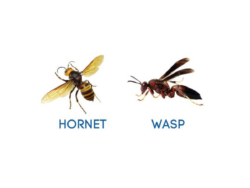Living in Ocala, Florida, means enjoying a sunny, outdoor lifestyle—but it also means sharing space with stinging insects like wasps and hornets. While these insects play a helpful role in the ecosystem, their stings can cause discomfort and sometimes serious allergic reactions. Knowing how to tell them apart, what to do if stung, and how to keep them away can make summer a lot more comfortable.
This guide covers how to identify wasps and hornets, what their stings feel like, and practical, eco-friendly ways to avoid them.
How to Identify Wasps and Hornets
Although they belong to the same insect family, wasps and hornets have distinct differences in appearance and behavior.
Wasps
Appearance:
- Slender, segmented bodies with a narrow waist
- Typically yellow and black or brown and yellow
Behavior:
- Attracted to sweet foods and proteins
- Found near gardens, trash bins, and outdoor gatherings
- May sting if they feel threatened
Nests:
- Made from paper-like material
- Found under decks, roof eaves, or tree branches
Hornets
Appearance:
- Larger and bulkier than wasps
- Often black and white or less brightly colored
Behavior:
- Less likely to sting unless their nest is disturbed
- Feed on other insects, contributing to natural pest control
Nests:
- Typically round and large
- Often located high in trees or buildings
Symptoms of Wasp and Hornet Stings
Both wasps and hornets sting using a venomous stinger. For most people, symptoms are mild, but some reactions can be more serious.
Common Symptoms:
- Sharp, sudden pain at the sting site
- Redness and swelling
- Warmth or mild itching
Watch for Severe Reactions:
- Swelling of the face, throat, or tongue
- Trouble breathing
- Rapid heartbeat or dizziness
Seek medical help right away if these symptoms appear. Multiple stings can make symptoms more intense, especially from hornets.
Practical Tips for Avoiding Stings
The best approach is to avoid attracting wasps and hornets in the first place.
1. Avoid Attracting Them
- Keep food and drinks covered during outdoor meals
- Avoid wearing perfumes, scented lotions, or hairspray
- Clean and seal trash bins regularly
2. Be Careful Around Nests
- Watch for early signs of nest building
- Stay calm and move slowly if you spot a nest
- Don’t swat at them, as sudden movement can provoke stings
3. Wear the Right Clothing
- Choose light-colored clothing outdoors
- Cover exposed skin when gardening or hiking
Eco-Friendly DIY Tips for Managing Wasps and Hornets
There are natural ways to reduce their presence without relying on harsh solutions.
Limit Nesting Spots
- Seal cracks and crevices around the home
- Clear away unused wood, debris, or clutter from the yard
Natural Deterrents
- Mix peppermint oil with water in a spray bottle and apply near outdoor sitting areas or under eaves
- Hang fake wasp nests to discourage real ones from settling nearby
DIY Traps
- Cut the top off an empty plastic bottle and invert it into the base
- Fill with sugar water to attract and trap wasps
Encourage Natural Predators
- Plant native flowers and bushes to attract birds and insect-eating wildlife
- Avoid using broad-spectrum insect sprays that could harm helpful species
Wasps and hornets are a natural part of Florida’s warm climate, but they don’t have to disrupt your summer. By learning how to identify them, taking simple prevention steps, and using eco-friendly methods to manage their presence, you can create a more comfortable outdoor environment for yourself and your family.
Contact a local pest control expert today to get started with a free pest control quote!


